Acid Reflux in Dogs: How to Help
 Synne Hemsen Berg
Synne Hemsen Berg
Does your dog frequently regurgitate food, show discomfort when eating and lick their lips? Do they vomit yellow bile in the morning and lack appetite? These could be signs of acid reflux, a common yet often overlooked digestive issue in dogs.
While occasional acid reflux isn’t usually a cause for concern, chronic or severe cases can affect your dog’s health, comfort, and weight. Understanding the causes, symptoms, and solutions can help you manage and prevent acid reflux naturally while ensuring your pup’s well-being. In this guide, we’ll cover everything dog owners need to know about acid reflux, from identifying the warning signs to choosing the best diet for a happy, healthy gut.
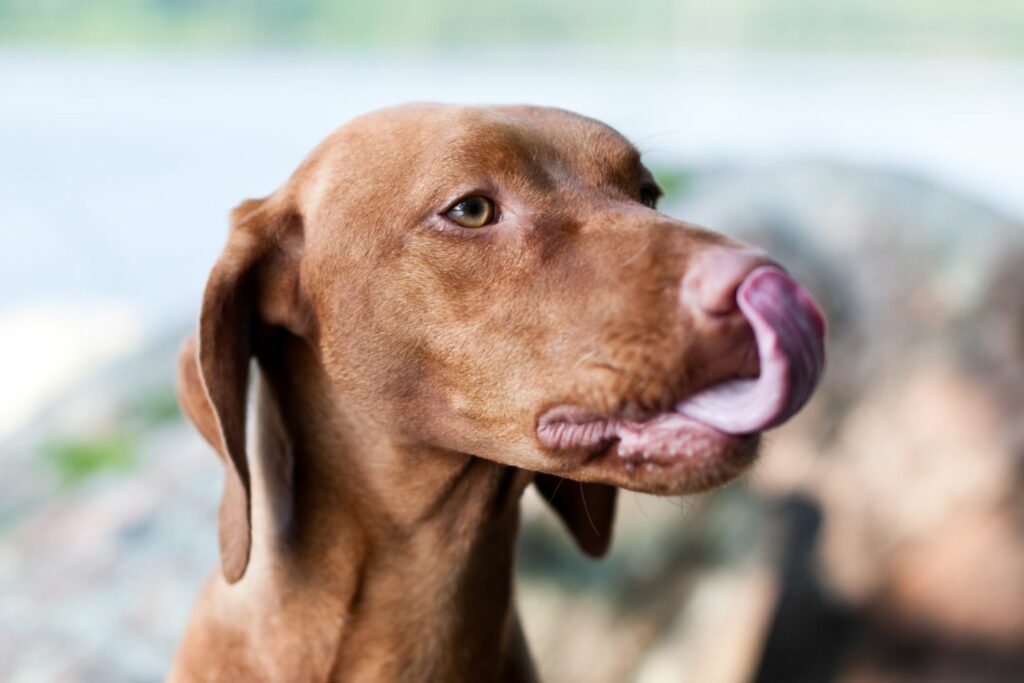
What is Acid Reflux in Dogs?
Acid reflux, also known as gastroesophageal reflux disease (GERD), happens when stomach acid flows backwards into the oesophagus, causing irritation and discomfort.
In a healthy dog, a muscular valve called the lower oesophagal sphincter (LES) prevents stomach acid from escaping. However, when this valve weakens or relaxes too much, acid can travel up the oesophagus, leading to symptoms like burping, regurgitation, coughing, and discomfort after eating. Dogs of all ages and breeds can experience acid reflux, but small breeds, brachycephalic (flat-faced) dogs, and overweight dogs may be more prone to it.
Causes of Acid Reflux in Dogs
Several factors can trigger or worsen acid reflux in dogs, including:
1. Diet-Related Triggers
- High-fat foods: Fat delays stomach emptying, increasing acid buildup.
- Human food: Spicy, greasy, or dairy-based foods can cause reflux.
- Large meals: Overfilling the stomach puts pressure on the oesophagus.
- Low-quality food: Highly processed foods with artificial additives can upset digestion.

2. Food Allergies or Intolerances
Some dogs experience acid reflux due to food allergies or intolerance. Common allergens and irritants include chicken, beef, dairy, soy, wheat/gluten, harmful preservatives and artificial additives. A novel protein diet (such as insect-based protein like Nala Health) may be gentler on the stomach.
3. Obesity
Excess weight puts pressure on the stomach, increasing the risk of acid reflux. Keeping your dog at a healthy weight can significantly reduce symptoms.
4. Medical Conditions & Medications
- Hiatal hernia (a condition where part of the stomach moves into the chest).
- Prolonged use of NSAIDs or steroids (can weaken the stomach lining).
- Esophageal inflammation or ulcers.
- Brachycephalic airway syndrome (common in pugs, bulldogs, and other flat-faced breeds).
- Over- or underproduction of stomach acid.
- Irritable Bowel Disease and Gastritis
- Pancreatitis
- The dog has swallowed a foreign object.
- Hypercalcemia can also cause an upset stomach.
5. Eating Too Fast
Dogs who gulp down food too quickly often swallow excess air, which can lead to bloating, indigestion, and increased stomach acid production. When too much air is trapped in the stomach, it puts pressure on the oesophagal sphincter, making it easier for stomach acid to reflux into the oesophagus.

6. Post-Surgery Acid Reflux
Anaesthesia can relax the oesophagal sphincter, leading to temporary acid reflux in dogs after surgery.
7. Puppies/younger dogs
Younger dogs may be more susceptible to GERD due to the ongoing development of their gastroesophageal sphincters.
Symptoms of Acid Reflux in Dogs
Dogs with acid reflux may display a variety of symptoms, depending on severity. Look out for:
- Frequent swallowing, or difficulty swallowing (even when not eating).
- Lip licking or excessive drooling.
- Regurgitation of food or bile (yellow vomit, especially in the morning).
- Gurgling stomach noises.
- Burping.
- Bad breath (caused by stomach acid).
- Coughing or hacking (due to esophageal irritation).
- Refusing to eat or being picky with food.
- Discomfort after meals (whining, restlessness, or lying in odd positions).
- Eating grass.
- Weight loss in severe cases.
The Difference Between Acid Reflux and Vomiting in Dogs
Many dog owners find it difficult to differentiate between acid reflux and vomiting, as both involve food or liquid coming back up from the stomach. While they may appear similar, they have distinct causes, appearances, and levels of severity.
Acid reflux occurs when stomach acid or partially digested food flows backwards from the stomach into the oesophagus. This is a passive process as it happens without strong muscle contractions and usually occurs without warning.
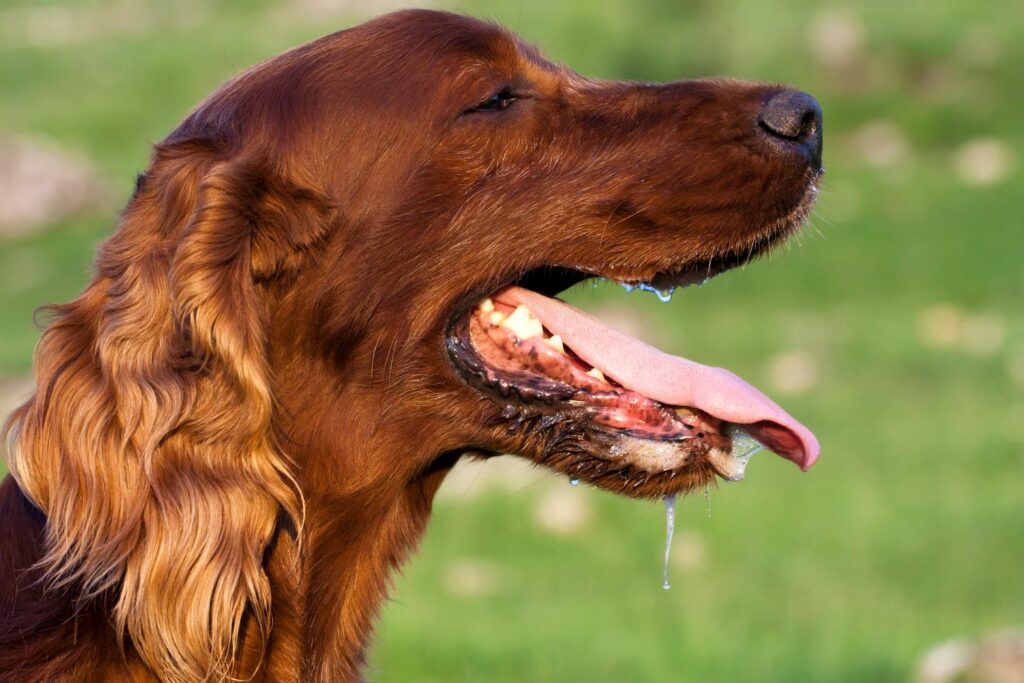
Vomiting, on the other hand, is an active process in which the body expels stomach contents in response to irritation, infection, or illness. It happens due to forceful muscle contractions in the stomach, often preceded by signs of nausea and discomfort.
It’s essential to determine whether your dog is vomiting or regurgitating. If you’re unsure, try to capture an episode on video—your observations can help your veterinarian pinpoint the underlying cause of your dog’s condition.
How is Acid Reflux Diagnosed?
If you suspect your dog has acid reflux, a veterinarian will assess symptoms, diet, and medical history to rule out other conditions and determine the best treatment approach. Diagnosis typically involves:
- Veterinary Examination – The vet will examine the dog’s throat, stomach, and weight, while also asking questions about symptoms.
- pH Monitoring in the Esophagus – Measures acidity levels over time to confirm acid reflux.
- Elimination Diet – Removing potential triggers such as fat, grains, and artificial additives to see if symptoms improve.
- X-rays or Ultrasound – Used to detect structural issues like hiatal hernia or delayed stomach emptying.
- Endoscopy – For chronic or severe cases, a vet may recommend endoscopy, where a small camera is inserted into the oesophagus and stomach to check for inflammation, ulcers, or damage from prolonged acid exposure.
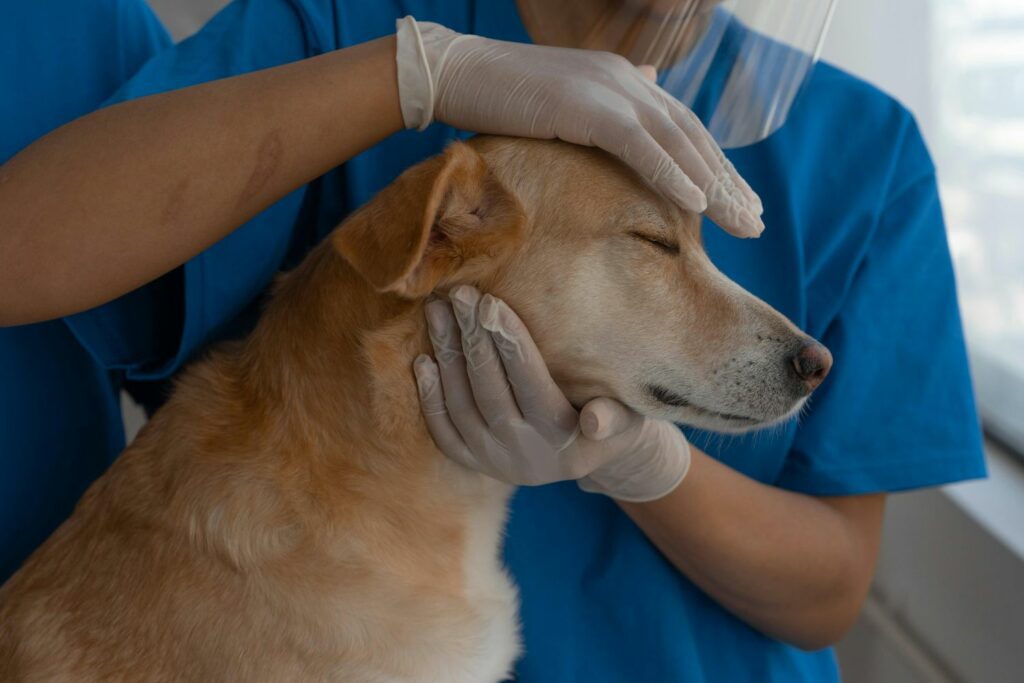
How to Treat and Manage Acid Reflux in Dogs
A. Dietary Adjustments (Best Nutrition for Acid Reflux Relief)
Diet plays a key role in managing acid reflux, as certain foods and feeding habits can either soothe the digestive system or exacerbate symptoms. Adjusting your dog’s food can help reduce acid buildup, prevent irritation of the oesophagus, and support overall gut health. Make sure your dog drinks sufficiently with clean water.
1. Feed Smaller, Frequent Meals
Instead of feeding one or two large meals per day, divide your dog’s food into smaller portions spread throughout the day. Large meals increase stomach pressure, making acid reflux more likely. Smaller, frequent meals allow for better digestion and a more consistent release of stomach acid, reducing the risk of irritation.
2. Avoid Fatty Foods
High-fat foods slow down digestion, keeping food in the stomach longer and increasing acid production. Nala Health offers a weight management diet with a lower fat percentage that can benefit dogs with acid reflux. The food is also free from artificial additives, which can sometimes trigger acid reflux.
3. Choose Easily Digestible Proteins
Some protein sources are easier on the digestive system than others. Opt for:
- White Fish (cod, hake): A lean, highly digestible protein rich in omega-3 fatty acids, which help reduce inflammation.
- Turkey: A lean protein that is gentle on the stomach.
- Insect-based proteins: like Nala Health, are hypoallergenic and highly digestible, making them ideal for dogs with sensitivities or food allergies.
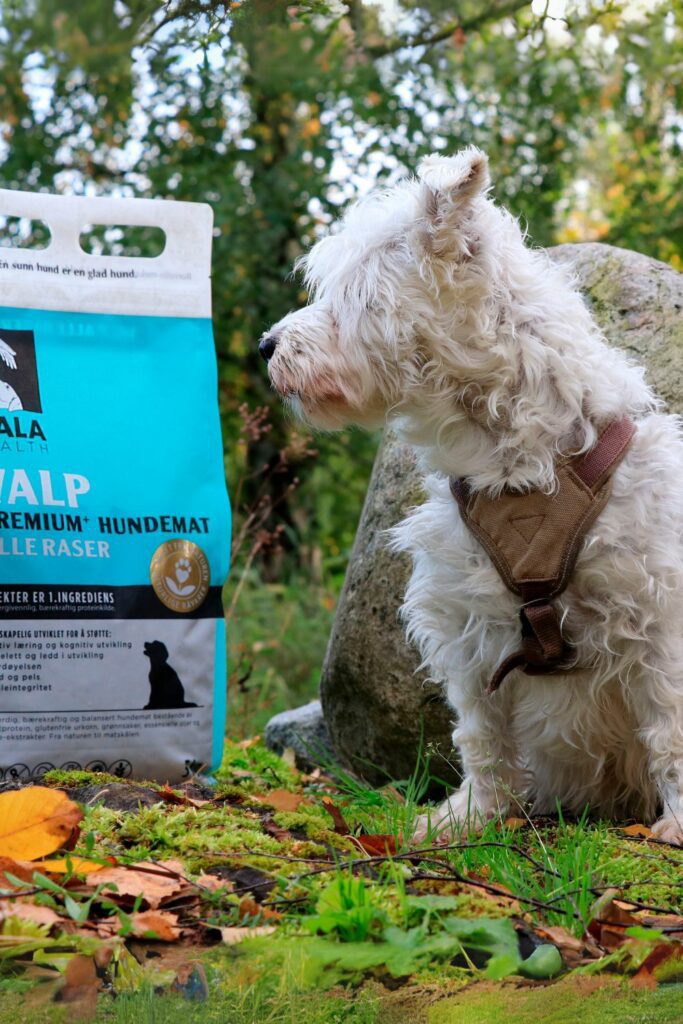
Avoid red meats and high-fat proteins, as they require more stomach acid for digestion and can worsen reflux.
4. Add Gut-Friendly Ingredients
Incorporating natural, gut-soothing ingredients into your dog’s diet can help settle your dog’s stomach. Some effective additions include:
- Pumpkin – A fibre-rich topper that helps with digestion and soothes the gut lining. You can make a simple pumpkin puré that can be used as a topper for their food. You can find a recipe in our blog here.
- Bone broth – Contains collagen and amino acids that support the oesophagus and gut lining, reducing irritation caused by acid reflux. We have a recipe for dog-friendly bone broth here.
- Probiotics – Help maintain a healthy gut microbiome, which can improve digestion and reduce acidity imbalances. Probiotics also support nutrient absorption and immune health. Nala Health dog food already contains probiotics and other gut-friendly ingredients to support digestion.
B. Home Remedies for Acid Reflux
- Ginger – A natural digestive aid that helps reduce nausea, bloating, and acid buildup. It can be given in small amounts as fresh grated ginger,or brewed as a mild tea. Always start with a small dose to ensure your dog tolerates it well.
- Marshmallow root – Soothes the oesophagal lining by forming a protective coating, reducing irritation from stomach acid. This gentle herb also supports overall digestive health but should be avoided by diabetic dogs and if your dog is taking other medications.
- Omega-3 fatty acids – Help reduce inflammation in the digestive tract, including the oesophagus and stomach lining. Found in fish oil and marine algae, omega-3s can be added to your dog’s diet to support gut health and overall well-being. Nala Health already contains omega 3.
- Slippery elm – A natural remedy that coats and soothes the oesophagus, helping to reduce irritation and inflammation from acid reflux. Slippery elm is normally found as a capsule. You can give ¼ teaspoon of powder per 4.5 kg of body weight.
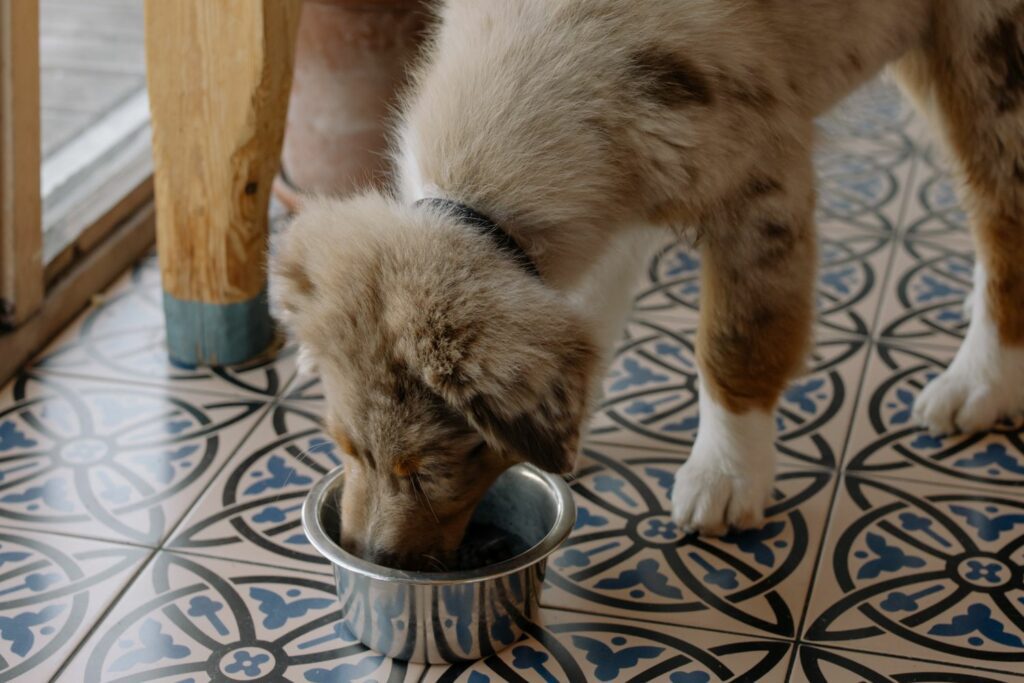
Remember to always consult with a veterinarian before giving your dog any supplements, especially those suffering from medical conditions or who are taking medication.
C. Veterinary Treatment Options
If dietary changes and natural remedies don’t help, your vet may prescribe:
- Acid reducers (omeprazole, famotidine).
- Prokinetic medications (metoclopramide) to improve stomach emptying.
- Prescription diets for sensitive stomachs.
D. Treating Acid Reflux in Dogs with Anatomical Abnormalities
For dogs with a structural issue such as a hiatal hernia or a stricture, treatment may include surgery if the condition is severe. Surgical intervention may be able to correct the issue and provide long-term relief. If surgery is recommended, it will typically be combined with dietary adjustments, medication, and other management strategies to ensure the best outcome.

When to See a Vet
If your dog experiences persistent or worsening acid reflux symptoms, it’s time to consult a veterinarian. Seek help if your dog:
- Loses weight or refuses to eat.
- Vomits frequently or has blood in vomit.
- Shows signs of oesophagitis (severe inflammation).
- Has difficulty swallowing or choking episodes.
Happy Gut, Happy Dog!
Acid reflux in dogs can be managed and even prevented with the right diet, lifestyle adjustments, and veterinary support. If your dog struggles with digestive discomfort, switching to a high-quality, allergy-friendly food like Nala Health and focusing on gut health can make all the difference.

